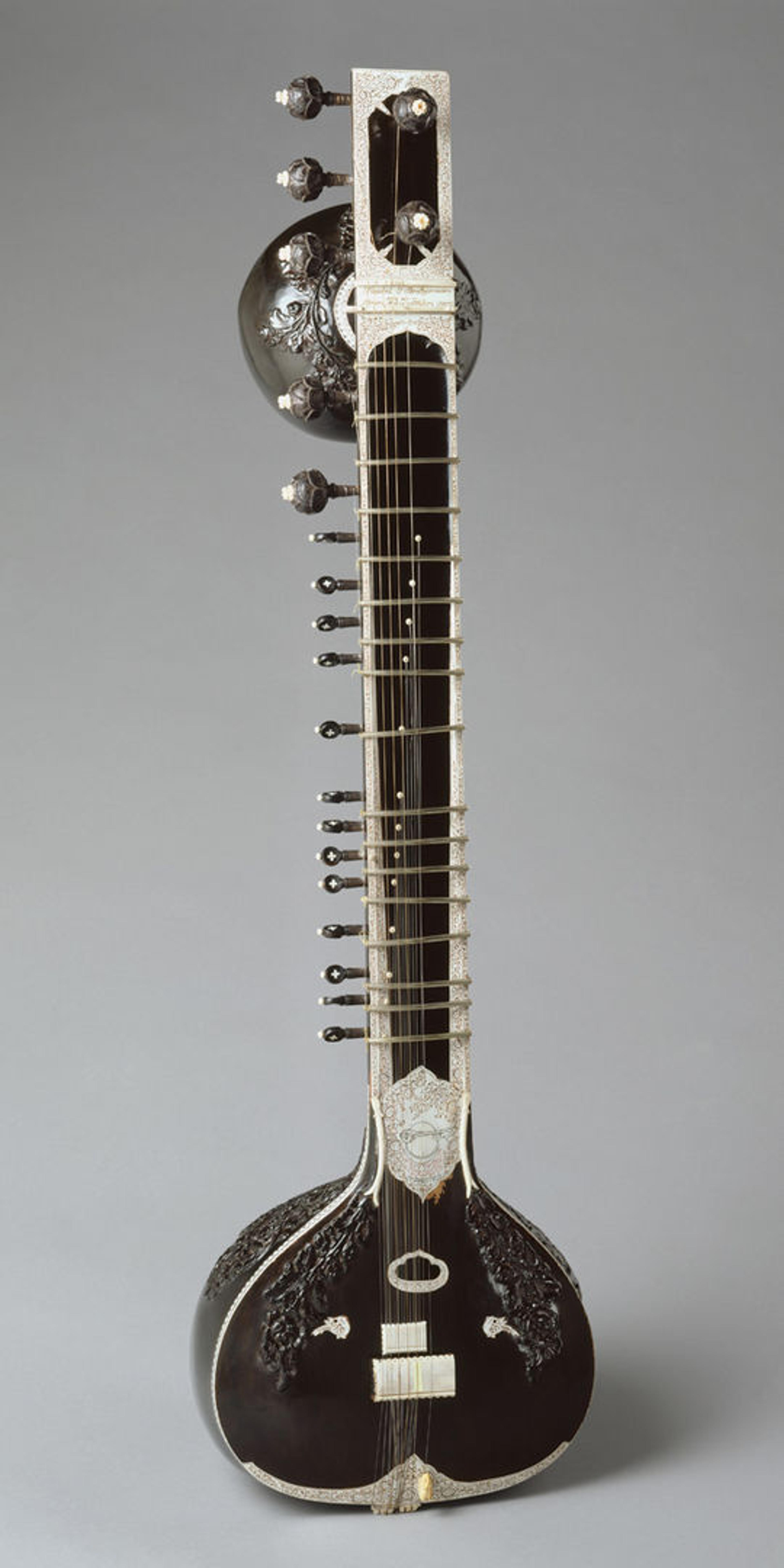
Murari Adhikari (Indian). Sitar, 1997. Teak, ebony, metal, bone, various materials. The Metropolitan Museum of Art, New York, Gift of Steven Landsberg, 1999 (1999.399)
«Happy birthday to Pandit Ravi Shankar—the legendary sitarist widely known to have played a pivotal role in spreading appreciation for Hindustani classical music throughout the world, as well as for teaching Beatles guitarist George Harrison to play the instrument.» Born in Varanasi, India, in 1920, Shankar began touring internationally in the 1950s and continued performing until a month before he passed away in December 2012. Throughout his career he received countless awards in honor of his musical contributions, which include a posthumous lifetime achievement Grammy Award and the Tagore Award for outstanding contribution to cultural harmony universal values. Shankar was knighted in both France and Britain.
Shankar is credited for promoting jugalbandi, a style of musical dialogue in which he and tablā master Ustad Alla Rakha would trade improvisations. This important collaboration helped to spread appreciation for tablā performance. He also developed a distinct style of sitār performance that many credit as having been influenced by his appreciation for the rhythmic practices of South Indian classical music, based on a foundation of unconventional rhythmic cycles.
Ravi Shankar owned many sitārs in his lifetime. Growing up in Uttar Pradesh, his first instruments came from Lucknow. In 1942 he ordered his first sitār from the legendary maker Kanai Lal in Calcutta, which was finally finished in 1944. In Shankar's second autobiography, Raga Mala, he wrote, "Kanai Lal was like a legend. No one could make sitārs like him."
The Met is proud to have a sitār made by Murari Adhikari, grandson of the founder of the shop, Damodar Adhikari, and nephew of Lal.
This sitār was built in 1997; however, it was made in the "old style" that was much more popular in the early twentieth century, and features a sound hole underneath the strings—a style no longer fashionable among sitarists. Old-style sitārs also featured thinner, more rounded tops and the necks extend from the base at a ninety-degree angle, while modern sitārs bend backward at an angle greater than ninety degrees.
Like this sitār from our collection, Shankar was noted for playing instruments with the second tumba, or gourd resonator, extending from the neck. Some musicians claim that this is merely decorative, or that it only serves to add weight and balance the performance technique. Others claim that it adds extra resonance and dampens some of the higher frequencies, giving the instrument a clearer tone.
In honor of Shankar's ninety-fourth birthday, the Department of Musical Instruments presents a video of sitarist K.V. Mahabala playing Jor in Rāg Desh while accompanied by Benjamin Stewart on tāmbūra—a 2013 performance filmed in one of two galleries displaying the art of Mughal South Asia and Later South Asia. The jor is the second part of a concert's opening section and usually precedes the accompaniment by the tablā. It features solo sitār performance in which the sitarist combines melodic embellishment with rhythmic plucking.
Related Article
The "Lovely Sound" as Symbol of Nineteenth-Century Multiculturalism